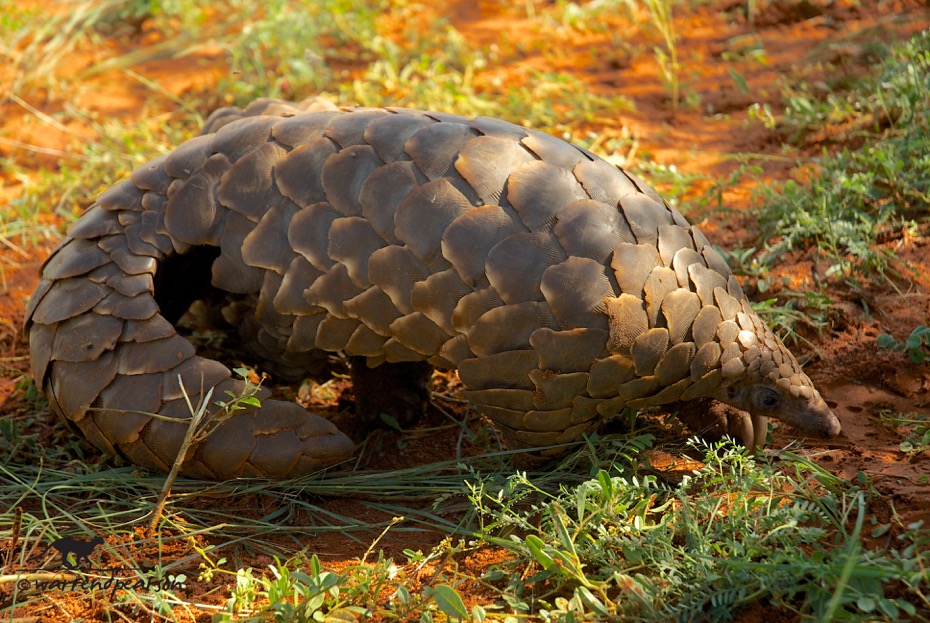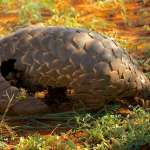South Africa is a land of great beauty, where sunrises bless the land with a golden glow, the winds blow ocean breezes inland, and animals roam freely about the reserves.
South Africa is known as the home of the Big 5 and remains a popular destination for safari goers, as well home to pristine coastlines that give visitors the chance to spot marine life like whales, dolphins, and seals. But among these familiar names are some of the strangest creatures you won’t catch anywhere else in the world.
- The Cape Pangolin, Smutsia temminckii
The Pangolin has been around for 40 million years and is also referred to as the scaly anteater due to its similar appearance. It is a nocturnal animal that usually lives in caves and tunnels, though it can also live in the grasslands and savannahs. The Pangolin’s body is covered with an armour of scales, these are incredibly sharp despite being made from the same substance as human hair. The most vulnerable spot is the soft belly, so when in danger the pangolin curls up into an almost impenetrable ball, putting those scales to good use as a defence. It has a toothless mouth but its long, sticky tongue makes it a deadly hunter against ants and other insects.
- Elephant Shrew, Sengis
Despite their similarities to a real shrew they are not of the family genus and this tiny, but adorable, insectivorous mammal is named after the elephant because of its very long ‘trunk-like’ nose. It has taken on the genus name of sengis from the Bantu (literally people) languages. They vary between 10 – 30 centimetres in size and have been likened to miniature ant-eaters, as these tiny predators hunt insects using scent. They can hop on their back legs and are found across various biomes in South Africa and Africa.
- Coelacanth, Latimeria chalumnae / Cœlacanthus
This marine species was once thought to be extinct, before being re-discovered off the coast of South Africa in 1938. It has been nicknamed ‘living fossil’ due to the previous assumption that it became extinct in the late Cretaceous period, 65 million years ago. Not pretty by any standard, the Coelacanth is assumed to have taken its present appearance around 400 million years ago as determined by fossils found. They feed only at night, and dwell in caves during daylight hours, allowing them to conserve energy by not struggling against the currents. Scientists assume that coelacanths can recognise others in their species (as Coelacanth’ have individual markings) by using a type of electric communication.
- The Ogre–faced spider, Deinopis
This incredible arachnid has a long, thin body and legs, and a face that bears an uncanny resemblance to a baboon or ogre, with large eyes and a prominent chelicerae (lower jaw). They have a rather sophisticated way of catching prey – using a similar method to fishermen– they spin a net, and wait until their prey approaches before throwing their net over their victim. The victim is ensnared and then the spider descends to bite and paralyse the helpless insect. They then either eat their prey at once, or hang it upside down to devour later at their leisure. The spider spins a new net each time they hunt.
- Bat-eared Fox, Otocyon megalotis
The Bat-eared Fox is an incredibly cute mammal with tawny fur, a pointed face and large black ears which sets it apart from others within the Vulpis family. Their diet consists mainly of termites, (again an unusual trait as they are within the canid family), but when these can’t be found they also eat spiders, moths, and very rarely small birds, mammals and reptiles. They are commonly found in grasslands and savannahs, and live in self-dug burrows. They have a unique role-reversal with their young, as once the females have bred and lactated their offspring, the males then step in and protect, groom, defend, and carry their offspring when moving between dens.
About the Author: Roseanna McBain is the writer for TravelGround, and loves learning about the fascinating wildlife, cultures, and biomes within South Africa.
Image sources: The African giant shrew. By Joey Makalintal (Creative Commons) – http://en.wikipedia.org/wiki/File:Rhynchocyon_petersi_from_side.jpg
Ogre-faced spider. By Robert Whyte www.arachne.org.au (Flickr) – http://www.flickr.com/photos/21021373@N04/3935649569
A Tree Pangolin by Valerius Tygart (Creative Commons) – http://en.wikipedia.org/wiki/File:Tree_Pangolin.JPG
The bat-eared fox. By Dave Pullig (Flickr) – http://www.flickr.com/photos/41061319@N00/4093378067/








